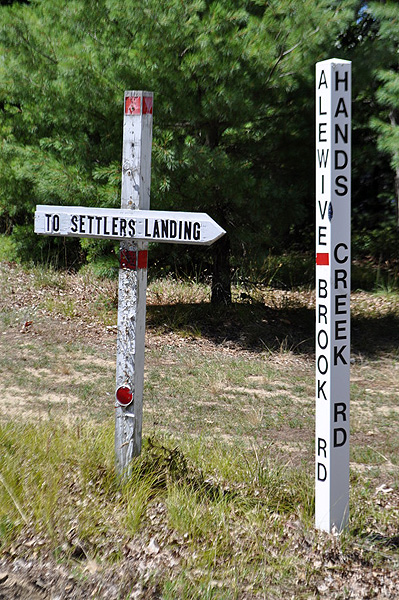
It’s a conclusion that is easy to assume—Hedges Lane in East Hampton was named for the tall, sculpted hedges that seem to grow out of control from time to time.
But no. The road was named for the Hedges family, in particular, William Hedges, who settled in East Hampton in the 1600s, according to Richard Barons, the executive director of the East Hampton Historical Society.
“There’s no question it was named for the family,” he said during an interview last year. He added that David’s Lane was also named for a member of the Hedges family.
“When they did the application for the road, circa 1917, it was named in honor of him,” Mr. Barons said.
Deacon David Hedges, who was born in 1744 and died in 1817, held many positions in government and was one of those who ratified the Constitution of the United States in 1788.
Mr. Barons added that privet, which seems to be everywhere here, is not indigenous on the East End. It was planted by the early English settlers.
Osborne Lane in East Hampton was named for the Thomas Osborn (originally without an “e”) line, Mr. Barons reported. He said the settlers arrived here in the 1600s and added the “e” to the name later.
“Osborne Lane seems to have been accepted as a road in 1923,” he said, adding that the name was approved with the help of Justin Banister, who owned some of the property.
The first illustrious residents of the area had many lanes, roads, and byways named for them. Early settlers include Samuel Sherrill, who survived a shipwreck off the coast of East Hampton and lived in the town until his death in 1719.
There were also many Hands in the area, including Stephen Hands, who was born in the 1600s. He allowed the town to build a road across his property, which is now Stephen Hands Path.
Nathaniel Huntting was a pastor of the church of East Hampton. Huntting Lane was named after him.
The Fithians, who were Welsh, came in the 1600s. The Talmages were also early settlers. The name “Talmage,” incidentally, is one of the oldest names in Saxon history.
Other early settlers, including the Daytons, Dimons and Gardiners were given the honor of street names as well.
Lyon Gardiner, a Dutchman, arrived in 1638. The Dimons, as the name is now spelled by descendants, came from Lynn, Massachusetts in 1660. According to records, that name also seems to have been spelled “Diament,” “Dyament” or “Dimond” at that time.
Isaac Van Scoys, a descendant of the Dutch, according to his diaries, settled in the Northwest Woods in the mid-1700s. He built a primitive house with a turf roof. By 1771, he had expanded it to a two-story house that he, his wife and their children (15 were born, seven died) could live in.
Historical notes show there was a schoolhouse on the Van Scoy property. Additional information gleaned from history shows that when the British raided the house during the Revolutionary War, Mr. Van Scoy killed a soldier with a pitchfork.
Land in the Northwest was used for cattle and sheep-grazing, (Cattle Walk was thusly named), but as landowners moved elsewhere, the topography changed to heavy woods. More recent landowners, the Dukes, for example, owned property first, and had a road, Duke Drive, named for them.
The Native Americans, of course, were here long before the European settlers. Some places named by them still remain, including Ashawagh, which means “between the branches of a creek,” and Copeces, which translates from Algonquian to “little place of shelter.”
Native Americans also soaked the hides and tanned them near what is now called Soak Hides Road. That area has been a place of discovery for Native American artifacts.
Road labeling corresponding to well-known locations are too many to mention, but include Oyster Pond Lane, Three Mile Harbor, Grape Harbor, Lily Pond Lane, Ocean Road, Blueberry Knolls, Sawmill Lane, Windmill Lane, Briar Patch Road, Goose Creek and Clay Pit Road. Whale Rock Lane is named for a stone resembling a whale on the corner. And Hollow Tree Lane leads to, yes, a hollow tree.
For those wondering about words no longer used commonly, such as scuttle hole and “alewife,” the first is a crawl space into an attic or near plumbing and the second is a fish found in local waters. In the 1700s, the Northwest Woods was also known as Alewife Brook Neck.
The word “hardscrabble,” as in the area north of 114, means “not producing much” or “poverty-stricken.” Or, as they like to say nowadays, between a rock and a hard place.